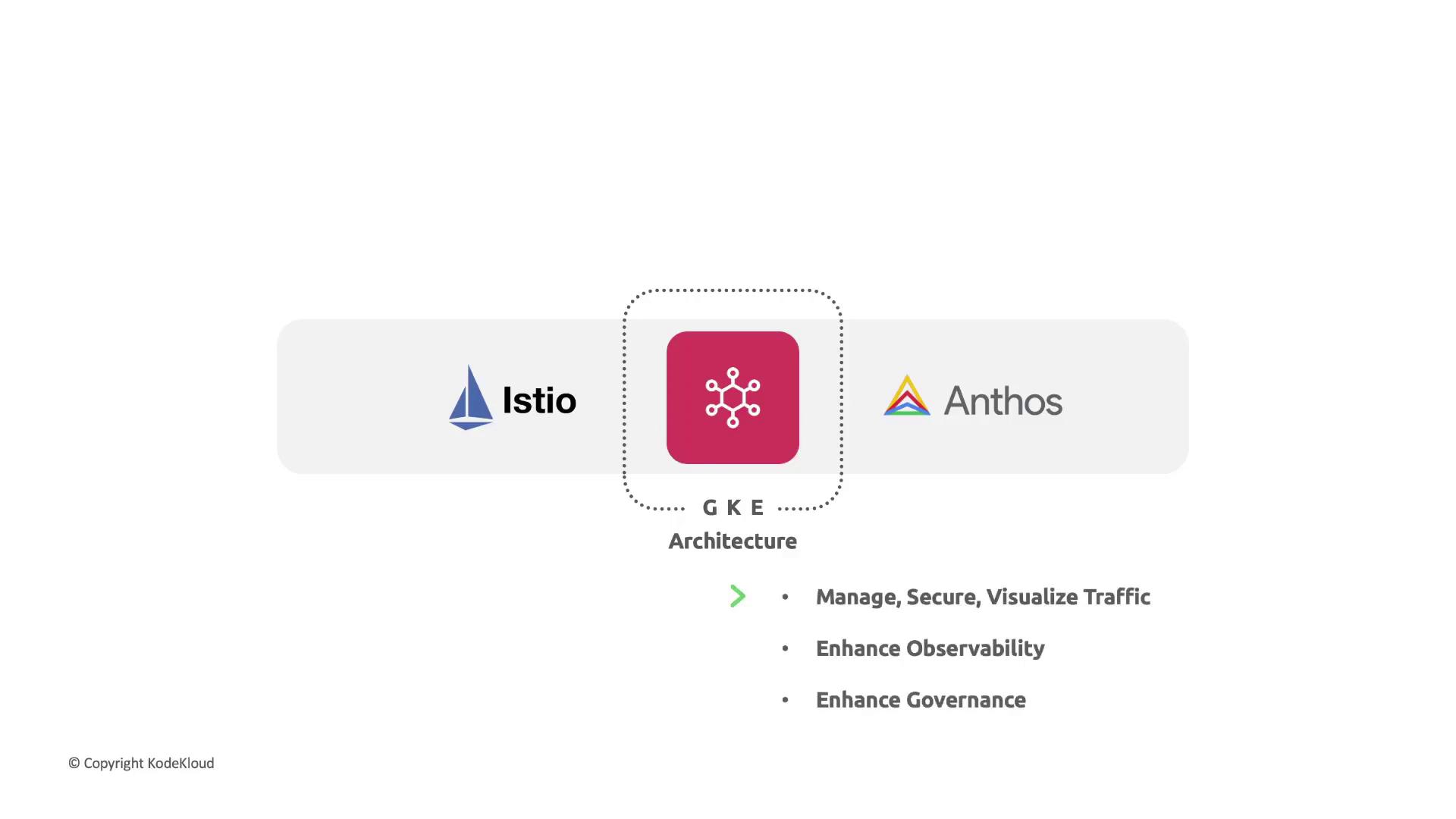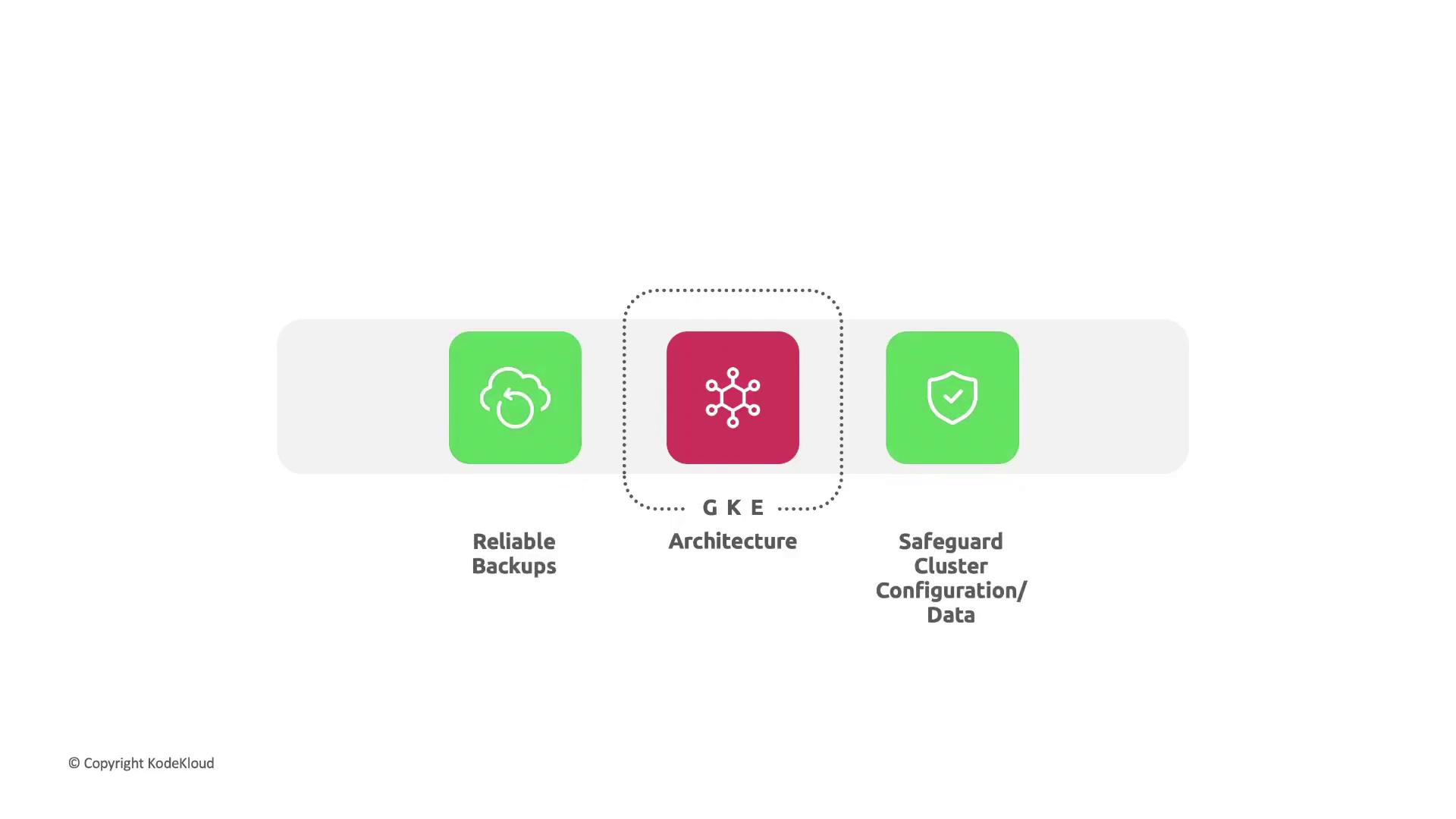GKE - Google Kubernetes Engine
GKE Design Considerations
Section Introduction
Welcome, Google Cloud enthusiasts! In this lesson, we’ll explore best practices for designing resilient and efficient architectures on Google Kubernetes Engine (GKE). Whether you’re running stateless microservices or stateful workloads, careful planning ensures optimal performance, scalability, and reliability.
We’ll cover:
- Regional clusters: Understand when to choose regional GKE clusters and their impact on availability.
- High availability (HA) design: Key considerations for fault tolerance, redundant control planes, and load distribution.
- Service mesh integration: Leverage Istio on GKE and Anthos Service Mesh for traffic management, observability, and security.
- Backup strategies: Implement reliable backups and safeguard your cluster configuration and data.
Understanding these components will equip you to architect GKE environments that withstand failures, adapt to traffic spikes, and maintain compliance standards.

Why Regional Clusters Matter
Regional GKE clusters replicate control plane and node pools across multiple zones. This setup reduces single-zone failure risk and improves uptime SLAs.
Note
Regional clusters incur additional network egress costs between zones. Evaluate your budget and application requirements before opting in.
Architecting for High Availability
To achieve an HA GKE cluster, consider:
- Multi-zone node pools: Distribute nodes across at least three zones.
- Redundant control planes: Use regional clusters to replicate the control plane.
- Autoscaling: Enable Cluster Autoscaler and Horizontal Pod Autoscaler for dynamic resource management.
- Multi-zone load balancing: Configure an external HTTP(S) load balancer with cross-zone failover.
Integrating a Service Mesh
Istio and Anthos Service Mesh add powerful capabilities:
- Traffic management: Fine-grained routing, retries, and fault injection.
- Security: mTLS encryption and policy enforcement.
- Observability: Distributed tracing, metrics, and logging.

Backups and Disaster Recovery
A sound backup plan protects your cluster state and persistent volumes:
- Cluster configuration: Export YAML manifests and store them in a Git repository.
- Etcd backups: Use Velero or GKE’s built-in snapshot features.
- Persistent data: Regularly snapshot PersistentVolumes using Cloud Filestore or Cloud Snap shots.
Warning
Restoring from backups can incur downtime. Test your restore procedures regularly to ensure RTO and RPO targets are met.
By following these design principles—regional architecture, HA patterns, service mesh integration, and robust backup strategies—you’ll build GKE environments that are both scalable and resilient. For detailed guidance, refer to the GKE documentation.
Watch Video
Watch video content